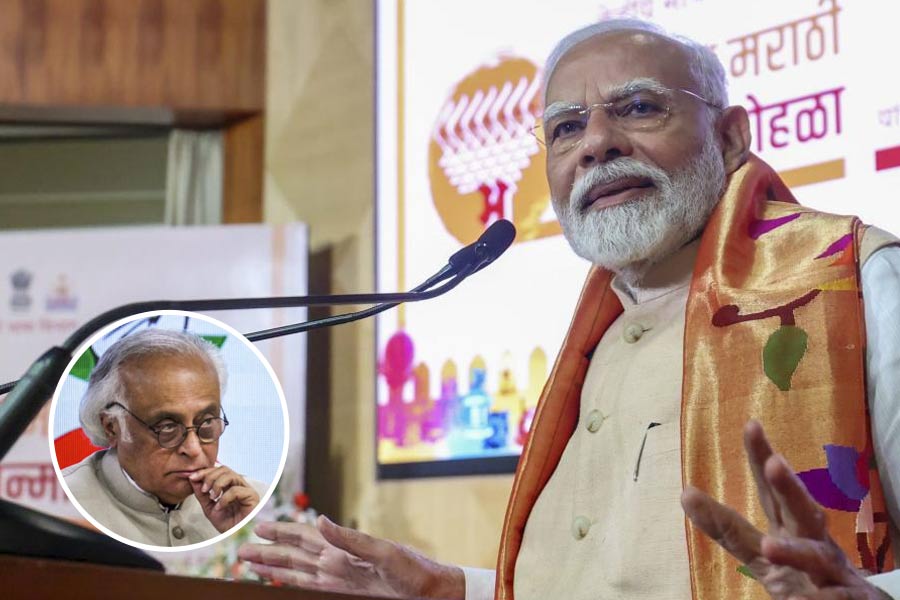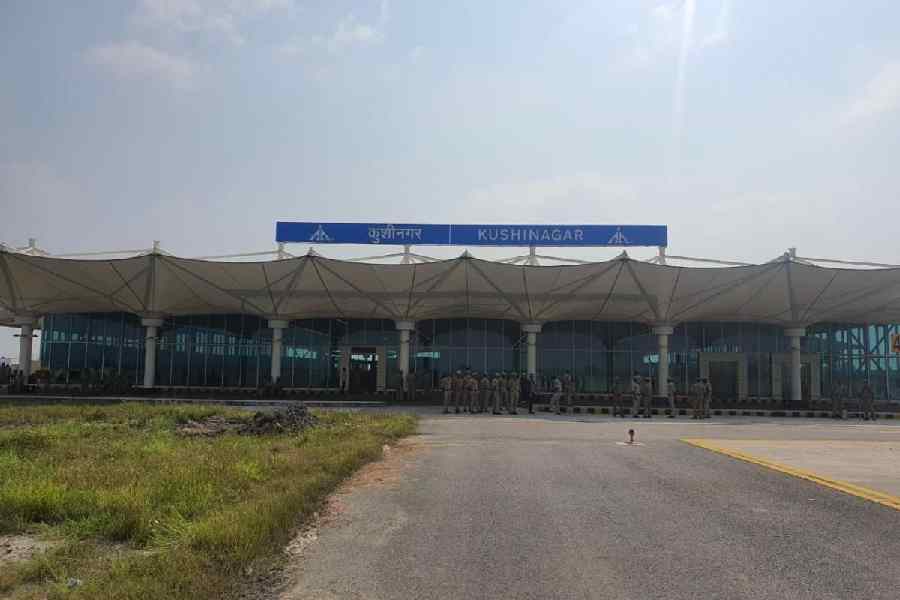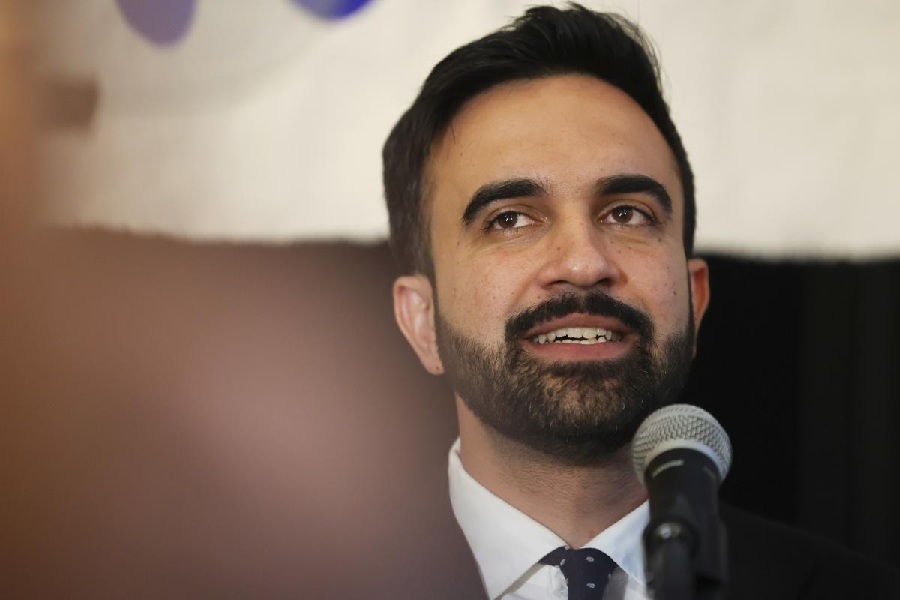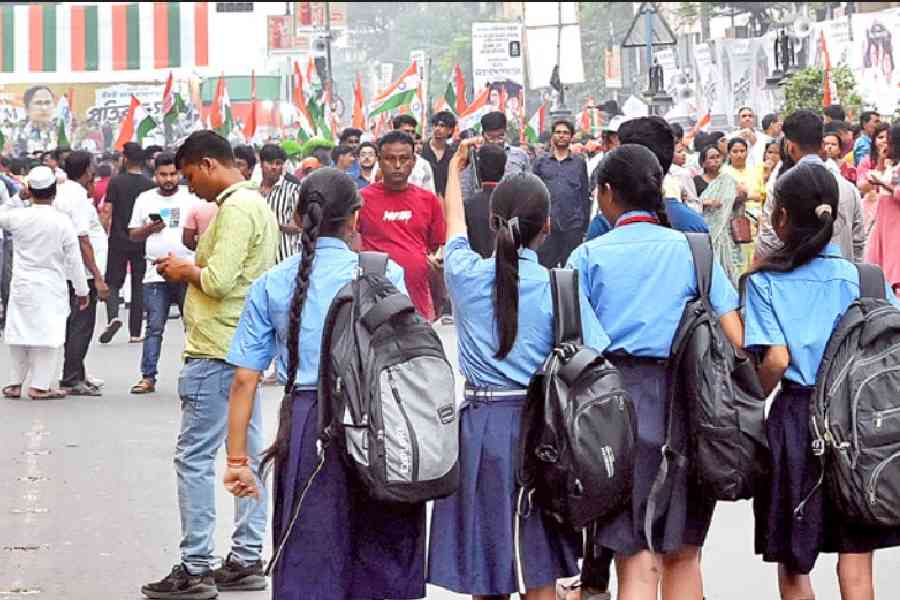 |
| Chhaya and Arun Subramanyam: Arun worked as a project manager in the US. The couple relocated to India for the third time in two years because Arun felt the job market here was hot. |
Like many other information technology (IT) professionals, Arun Subramanyam and his wife Chhaya relocated to Bangalore from Oregon in the United States to give India a shot. After a two-year stint, they went back, as planned, to the US in April this year ? only to return. They had gone back because of Chhaya; they returned because of their two-year-old son.
That, and the fact that Arun saw India as his new workplace. The Subramanyams relocated for the third time in two years not just because their son missed India, but because Arun saw the job market as hot. “My husband said that it is a now or never opportunity to grow,” says Chhaya. “I was the one who wanted to return to the US, and so we thought we were back there for good this time,” says Chhaya. Chhaya and Arun, who worked as a project manager at Accenture, went back to their old apartment complex in Portland, Oregon, and started to pick up the threads of their life. But, by the first week of August, Chhaya was back in Bangalore, accompanied by her son.
Clearly, India is a hot destination ? not just for BPO, IT and foreign institutional investors ? but also for non-resident Indians (NRIs). Once dubbed “Not Required Persons” or “Non-Returnable Indians,” large numbers of NRIs are coming back to India, seeking to be a part of the third-largest economy in Asia. And what was a trickle some years ago is today a veritable flood.
The NRI story has been a curious one. Many Indians who migrated between the 1950s and the 1990s thought they were leaving a basket case country behind. Few came back, for there was little, on the job front or otherwise, to come back to. But about five or six years ago NRIs started coming back to India. The first wave consisted of those hit by the dotcom bust. Many of them had no choice but to return to India. But in the past three years or so, people are moving back to India because they wish to.
While no statistics are available on how many NRIs are returning, anecdotal evidence suggests that it is a broad trend. A major logistics company spokesperson in Mumbai mentioned that almost every week it helps relocate NRIs to the Hiranandani Gardens at Powai in Mumbai ? the preferred residential place of many NRIs. Hiranandani is a self-contained complex and comes equipped with a shopping plaza, restaurants, state-of-the-art hospitals, an ecotel hotel and a school.
 |
| Arun Jaura: Vice-president, engineering and R&D, at Mahindra and Mahindra, Jaura relocated to Mumbai a few months ago from Detroit where he worked for Ford for almost 10 years. |
Some have Permanent Resident Cards, Green Cards or citizenship from other countries, tucked away among their important documents. Others return with hard-earned money to make it big in India. Some are relocating for a couple of years to do a test run before making up their minds, while a few have returned lock, stock and barrel to set up home in India. And while most are IT professionals, there are people from other industries such as automotive, biotechnology and media who are also coming back to India.
The return of the NRI is also fuelled by a demand for trained professionals in India. Companies are snapping up the returnees because of their work experience, especially for those in the middle and upper rungs of management. Motorola, Wipro, Larsen &Toubro and others have “return to India” programmes for people who want to relocate and work in India.
Ravi Tavag, CEO of Proman, a recruiting company in Bangalore, says that there is a great demand for people with 10-15 years of experience. Last year about 15 per cent of the people his company placed were NRIs.
And why are people returning ? all the way back from nations as far as the United States and Canada to as close as Singapore and Malaysia? The host of reasons range from the personal ? concerns about aging parents, or about wanting to bring up children in India ? to the professional ? the desire to seize growing opportunities in a booming economy. For many, it’s a combination of the personal and the professional.
Shivram Venkatasubramanian, and his wife Shuchi Grover came back to India two years ago with their two sons. Venkatasubramanian says that returning to India was not about why, but all about when. The couple sold their Chicago-based start-up in 2000 and made a fortune. They then took a sabbatical and went to Boston, where Shuchi studied at Harvard, and Shivram at the Massachussetts Institute of Technology (MIT). Shuchi’s focus was on the intersection of technology and education. Today she conducts robotics classes for a local school in Bangalore, and, sitting in the comfort of her home-office, conducts a teacher training programme for Harvard University. Venkatasubramanian teaches entrepreneurship classes at the Indian Institute of Science. He is also an angel investor, and helps start-up companies.
 |
| R. Giridhar: The editorial director at IDG Media is back in Bangalore after about a seven-year stint in the Asia-Pacific region working in hi-tech publications. |
Clearly, homecoming is easier today than ever before. There was a time when a returning NRI didn’t have the right job opportunities or a healthy work atmosphere. The cost of setting up a home in India was enormous and getting admission to good schools was a problem. Today, there are American-style cr?ches and play schools, as well as international schools. Living standards have gone up in India. Not surprisingly, people feel that they have an option to return to India and have a good quality of life.
Arun Jaura, vice-president, engineering and R&D, at Mahindra and Mahindra in Mumbai, is excited about the growth and new opportunities in India’s automotive sector ? identified as one of the fastest growing markets in the world. Jaura relocated to Mumbai a few months ago with wife and three school-going kids in tow. Earlier based in Detroit where he worked for Ford for almost 10 years, he headed the vehicle engineering platform for Ford’s hybrid SUV Escape, a high profile project.
In December, 2004, the Jauras considered moving back to India and were surprised by the rapid turn of events that facilitated the move. Earlier this year Jaura met with Pawan Goenka, president of Mahindra & Mahindra’s (M&M) automotive division and with M&M vice-chairman and managing director Anand Mahindra in the US. Within six weeks, he had an offer letter. “They made me an offer that I could not refuse,” he says.
NRIs who’ve been in other industries such as media and biotechnology are coming back to India too. Research scientist Srinivas Bharath returned to Bangalore from the San Francisco area and is now assistant professor of neurochemistry at NIMHANS. “Getting a position to do basic research in India is rare, and I did not want to lose this opportunity,” he says.
R. Giridhar is happy to be back in Bangalore after about a seven-year stint in the Asia-Pacific region working in various hi-tech publications. “Many transnational publishing and content development companies are moving their higher-end publishing activities to India, and there has been a progressive decline in publishing activities in Hong Kong, the Philippines and Singapore,” he says. And since all the action was happening in India, Giridhar decided to move back with his wife and family. “My forte is electronics, computers, telecom ? and India is where it is all happening today,” says Giridhar, editorial director at IDG Media Pvt. Ltd, a subsidiary of IDG Inc, a US$ 2.4 billion privately-held IT publishing house.
For many who are returning to India, Bangalore seems to be the preferred destination. Not just for better job opportunities but also because of other important factors such as real estate and school standards. In the past few years, a great many schools modelled on international institutes have sprung up in Bangalore.
Bringing up children in India, clearly, is a major reason NRIs are coming back. “I prefer to raise our kids in India,” says Janaki Valappil, a software engineer. “Plus, our parents are growing old and we want to be near them.” Janaki and her husband Prem lived in the US for eight years, but moved to Bangalore from Milwaukee, Wisconsin, a couple of years ago.
Janaki, who lives in Koramangala ? considered an NRI hub because of the large number of NRI residents there ? says four out of the five children on her floor are American citizens. The apartment complex she lives in has about 800 flats and roughly every other person in the complex is an NRI.
 |
| Shivram Venkata-subramanian and Shuchi Grover: Returned to India two years ago after making a fortune from selling their Chicago-based start-up in 2000. In between, Shuchi studied at Harvard and Shivram at MIT. |
Moving back to India has its own challenges and many admit that it takes a lot out of them to set up homes in India. But many NRIs stress that they are ready to overlook the problems, mainly because the advantages of challenging work and living close to their family members outweigh the drawbacks. Giridhar hits the nail on its head when he points out, “NRIs need to remember that everyone is out to ‘eat your lunch’ in India, where life is intensely competitive.” He recommends that NRIs come with two things: an incredible amount of patience and a healthy appetite for risk-taking.
Tavag says that by 2020 India will have created many more jobs, and most of the people who are returning are looking for growth opportunities, and not necessarily for money-saving opportunities. “It is Y21K,” Jaura stresses. “Now, it is return to India in the 21st century and make it happen here.”










